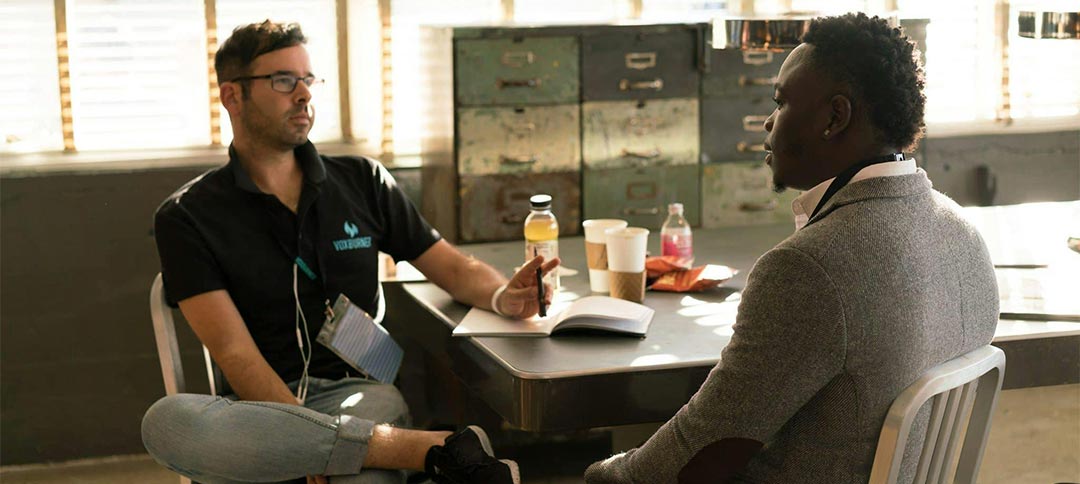Starting a nonprofit is exciting, but let’s be honest, it can feel like a lot. One of the first big steps you’ll face is forming your board of directors.
Think of your board as the group that helps guide your mission, offers support when you need it, and keeps everything on track behind the scenes. These are your people.
At Harness, we’ve worked with hundreds of nonprofits going through this exact step. And we’ve seen the same questions pop up every time: How many board members do we need? Where do we find them? What should they do? That’s what we’re here to help with.
In this guide, we’ll walk through how to build a board that not only checks the boxes but also truly believes in your mission. We’ll keep it simple, practical, and full of advice we’ve seen work. Whether you’re building from scratch or trying to make your board stronger, you’re in the right place.
What is a nonprofit board of directors and why does it matter?
A board of directors is like the backbone of your nonprofit. They’re the ones helping make the big-picture decisions, keeping everything legal, and making sure your mission stays front and center. If you’re the heart of the organization, your board is the steady hand on the wheel.
But here’s something important to know: your board doesn’t run the day to day. That’s your job, or your team’s job if you’ve got one. The board is there to guide, not micromanage. They help with things like approving budgets, hiring or supporting the executive director, and making sure you’re staying on mission. They also protect the organization by making sure you follow the rules, things like bylaws and nonprofit laws that help keep your nonprofit in good standing.
A great board brings more than just oversight. They bring energy, ideas, and sometimes connections to people or funding you wouldn’t reach otherwise. When your board believes in your cause as much as you do, that’s where the real magic starts.
Legal and structural basics
Before you start inviting people to your board, there are a few rules you’ve got to know. Most states in the U.S. require at least three board members to form a nonprofit, usually a president (or chair), a treasurer, and a secretary. These roles can’t all be filled by the same person. And while three is the minimum, you’ll probably want a few more so you’re not putting too much on any one person.
The IRS also looks at your board when you apply for tax-exempt status. They want to see that your nonprofit is run by a group of people, not just one person calling all the shots. So make sure your board is made up of folks who understand their responsibility to act in the best interest of the mission, not their own.
This is where your bylaws come in. Think of them like the rulebook for your organization. Your bylaws explain how your board works, how often you meet, how long people serve, what happens if someone steps down, and who can vote on what. If you don’t have bylaws yet, you’ll need them before filing with the IRS or most states.
And finally, it’s a smart move to create a governance committee, even if it’s just one or two people at first. This group keeps track of things like board recruitment, performance, and making sure everyone follows the rules you’ve set. It’s one of those little things that makes a big difference as your nonprofit grows.
Creating a board that supports your organization’s mission
You don’t just want warm bodies in board seats. You want people who believe in what you’re doing and are ready to help you move it forward. That means picking folks who care about your cause and are willing to show up, pitch in, and bring their skills to the table.
Start by thinking about what your organization really needs. Maybe you need someone with financial know-how, someone who’s great at marketing, or someone with deep roots in the community. It’s not just about having a big name, it’s about finding people who are aligned with your mission and who bring the right mix of skills and experience.
You also want board members who are clear on their role. They’re not running the day-to-day, that’s your job or your staff’s. Their job is to guide, support, and hold the organization accountable to its goals. They help steer the ship, but they’re not rowing it.
A good place to start is by writing short role descriptions for each position on the board. That helps potential members know what’s expected of them, and it helps you stay clear on what you need. The more upfront you are now, the better things go later.
And here’s something we’ve seen again and again: when you build a board that really gets your mission, everything feels easier. Fundraising, decision-making, even just showing up to meetings, it all flows better when the people at the table are truly invested in the work.
The board recruitment process
Finding the right people for your board isn’t just about filling seats, it’s about building a team that can help your nonprofit grow. Recruitment takes time, but when you do it right, it pays off in a big way.
Start with your existing board members or close supporters. These are the folks who already believe in your mission, and they might know others who would be a great fit. Ask them: Who do they trust? Who brings skills you don’t already have on the board? Who’s shown interest in getting more involved?
Next, look beyond your circle. Post about open board roles on your website, social media, or local nonprofit hubs. You can also check out board matching programs, they’re like dating apps for nonprofits and potential board members. It’s a great way to connect with people who are actively looking to serve.
When you’re reaching out, be specific. Share what your organization does, what your board is working on, and what kind of skills or experience you're hoping to add. This makes it easier for people to see where they might fit in, and it helps weed out folks who aren’t the right match.
Lastly, keep inclusion front and center. A strong board reflects the community it serves. Be intentional about inviting people from different backgrounds, life experiences, and skill sets. The more perspectives at the table, the better your board decisions will be.
Evaluating and onboarding board candidates
Once you’ve found people who seem like a good fit, don’t rush them onto the board. Take a little time to make sure it’s the right match, for both sides. A strong board starts with thoughtful choices, not fast ones.
Start with a simple conversation. Talk about your mission, your current goals, and what the board is working on. Ask them about their interests, time availability, and any experience they’ve had serving on other boards. You’re looking for alignment, not perfection.
To help with this process, you can create a basic board assessment checklist. It doesn’t have to be fancy. Just something to help you and your team keep track of what skills, experiences, or perspectives each candidate brings. If you already have a governance committee, they can help review and recommend candidates too.
Once someone is ready to join, don’t just throw them into the next meeting and hope for the best. Set them up with a simple onboarding plan. That might include:
- A quick intro call or meeting
- A packet with your bylaws, recent board minutes, and budget
- A one-pager that explains what you expect from board members
The goal is to make them feel welcomed, prepared, and excited to serve. And when people feel supported from day one, they’re way more likely to stay engaged long-term.
Board structure and responsibilities
Once your board is up and running, it helps to have a clear structure. This doesn’t mean you need a bunch of layers or red tape, it just means giving people defined roles so everyone knows what they’re responsible for.
Start with the basics. Every board needs a chair or president, a treasurer, and a secretary. The chair runs the meetings and keeps the group focused. The treasurer handles financial oversight, like reviewing budgets and making sure money is managed wisely. The secretary keeps records, like meeting notes and official documents.
As your board grows, you might want to add committees. These are small groups that focus on specific areas like finance, fundraising, or governance. Committees help spread the workload and let board members dig deeper into the areas they care about most.
Now let’s talk about engagement. A good board doesn’t just show up for a vote and head out. You want your members to stay involved between meetings, helping with outreach, giving feedback, and supporting your goals however they can. Think of your board as a team of trusted advisors who are all rowing in the same direction.
And don’t forget: your board supports the executive director, but they don’t manage them day to day. Their job is to give guidance and accountability, not to be in the weeds. A healthy board/ED relationship is based on trust, open communication, and clear boundaries.
Hosting your first board meeting and beyond
Your first board meeting sets the tone for how the group will work together. It doesn’t need to be perfect, but it should be organized, welcoming, and focused. Think of it as the team’s first huddle, not just to share updates, but to build trust.
Start by creating a simple agenda. Keep it short and clear. You’ll want to cover key basics like:
- A quick intro to the organization’s mission and recent progress
- A review of the bylaws and board responsibilities
- A look at your budget or funding goals
- A few minutes to talk about what success looks like for the board this year
Give people a chance to ask questions and share their thoughts. You’re not just running a meeting, you’re building a culture where people feel heard and valued.
As time goes on, keep your meetings regular but manageable. Most boards meet quarterly, but you can adjust depending on what’s going on. Share agendas ahead of time, keep notes simple, and focus on big-picture stuff. The details can be handled by committees or staff.
And remember: not everything has to happen in a meeting. Some of the best board engagement happens between meetings, in check-in calls, project work, or just showing up to events. Keep communication open, and check in with your board members individually now and then. It makes a difference.
Sustaining and growing your board over time
Building your board is one thing. Keeping it strong is another. Over time, your board will change, people move, step down, or shift focus. That’s normal. The key is to plan for it so you’re never caught off guard.
One of the best ways to keep your board healthy is by checking in regularly. Use simple board assessments to see what’s working, what’s not, and where you might need new energy or skills. This doesn’t have to be formal, just ask a few key questions like:
- Are we showing up and following through?
- Do we have the right mix of experience?
- Are we still aligned with the mission?
You also want to keep recruiting new board members before there’s a big gap. Think ahead about term limits, leadership changes, and how to bring in fresh perspectives. Your governance committee (if you have one) can help drive this.
And don’t forget about board development. Give your members chances to grow, whether that’s a quick workshop, a guest speaker, or just learning from each other. When people grow together, they stay connected and engaged.
Most of all, celebrate the wins. When your board helps hit a goal, lands a donor, or navigates a tough moment, acknowledge it. People want to feel like they’re making a difference. And when they do, they stick around.
The start of a partnership
Forming a board isn’t just paperwork, it’s the start of a partnership. These are the people who will support your vision, help solve problems, and carry your mission forward with you. When you bring the right folks together, everything becomes a little clearer and a lot more possible.
Remember, you don’t need to build the perfect board overnight. Start with people who care, stay honest about what you need, and keep the conversation going. Your board will grow and evolve, just like your organization. And that’s a good thing.
If you ever feel stuck, just know you don’t have to do it alone. Harness works alongside nonprofits every day, helping with donor engagement, fundraising tools, and yes, even board strategy. Whether you need tech that works or a team that gets it, we’re here to help.




